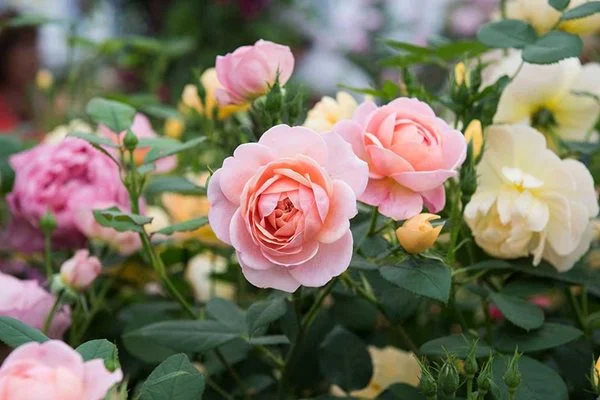How to grow roses

Choosing a rose
There are so many different types of roses that the choice can be a little overwhelming. To narrow down your options, consider the following:
Flowers
With roses in particular, the flowers themselves are often the deciding factor, and it’s all down to personal taste:
Do you want the large opulent blooms of an old-fashioned rose or something more delicate and refined such as a
- A plant produced by crossing two distinct parents, often different species, to produce offspring that combine the characteristics of both. Hybrids can occur naturally, but crosses are often made deliberately by plant breeders to produce plants with better yield, improved flowering or vigour, or improved disease resistance.
Hybrid Tea rose?
- What type of scent do you prefer? Some roses have a fruity fragrance while others have a musk or tea scent
- What colour would work well with your other plants?
- For all of these aspects, but especially fragrance, it’s best to see and smell the fragrance of the plants in bloom before you buy – either at a garden centre or nursery, or when visiting gardens where they grow roses in abundance.
Eventual size
You need a plant that will fit your space. Roses can range from compact types for patio containers to huge vigorous ramblers that can grow through the branches of a tree.
Planting position
There are roses to suit almost every planting site, so assess your particular conditions which may be shady, frost-prone or have a soil that may dry out in summer – see conditions in your garden – then look for a rose that will thrive there.
For help in finding the right rose for you:
Ask at your local garden centre, which should offer roses that do well in local conditions
Visit a rose specialist, either at their nursery or at an RHS flower show such as Hampton Court
Use the RHS rose selection guides. These recommend roses for a range of garden conditions
Use our Find a Plant tool
Buying a rose
Roses are sold in three different forms:
Bare-root roses
These are a good value option, available from November to March, usually online or by mail order. The plants are dug up from open ground, the soil is removed and they are wrapped to prevent the roots drying out. Plant as soon as you can on arrival, unless your soil is frozen or waterlogged, in which case unpack and keep them in a container of damp
Can refer to either home-made garden compost or seed/potting compost: • Garden compost is a soil improver made from decomposed plant waste, usually in a compost bin or heap. It is added to soil to improve its fertility, structure and water-holding capacity. Seed or potting composts are used for growing seedlings or plants in containers – a wide range of commercially produced peat-free composts are available, made from a mix of various ingredients, such as loam, composted bark, coir and sand, although you can mix your own.
compost until conditions improve.
Containerised roses
These are
These have been lifted from the ground while dormant, with little or no soil around their roots. Various plants may be available bare root, including fruit trees, hedging plants and some perennials. They are generally cheaper than plants in containers, but are only available in winter/early spring, while dormant
bare-root plants placed in pots of compost to prevent them drying out. They are at their best in garden centres from November to March. If buying at other times, check the plants look healthy, as they can deteriorate.
Container-grown roses
These are available all year round. They may be a little more expensive than bare-root or containerised plants but can be planted at any time.